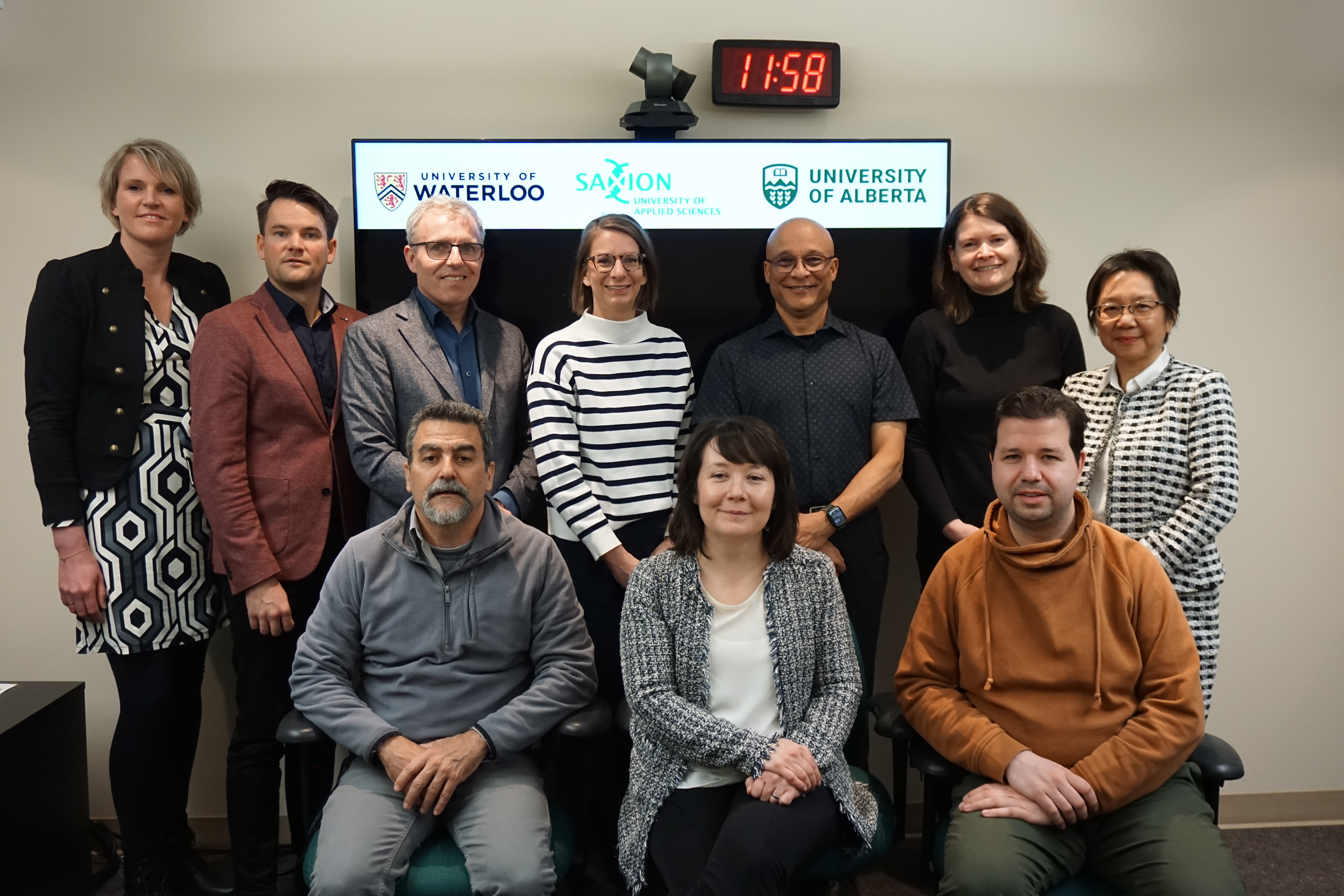Saxion and Waterloo visit U of A’s rehabilitation medicine
18 April 2024
 The collaboration, first officially formed in March last year, has already yielded many successful outcomes, including successful grant applications, presentations at international conferences, and collaborative manuscript publications. Its focus is contributing to cross-cultural responsive and accessible technologies for social impact.
The collaboration, first officially formed in March last year, has already yielded many successful outcomes, including successful grant applications, presentations at international conferences, and collaborative manuscript publications. Its focus is contributing to cross-cultural responsive and accessible technologies for social impact.
Visiting from Saxion University of Applied Sciences were Jan Jukema, coordinating professor health, well-being and technology research area and professor of personalized care; Marloes Bults, senior researcher, coordinator health, well-being and technology research area; Marjolein den Ouden, professor of technology, health and care; Sjors Groeneveld, PhD candidate and senior lecturer; Monique Engelbertink, associate professor Social Work and Jelte van Waterschoot, senior researcher Social Work.
Visiting lead collaborator and partner from the University of Waterloo was, professor in the School of Public Health Sciences and dean of the Faculty of Health, Lili Liu. Partners from the U of A include the Department of Occupational Therapy researchers Antonio Miguel-Cruz, Adriana Rios Rincon and department chair Shaniff Esmail.
Here’s what a few of our visitors from Saxion University of Applied Sciences and the University of Alberta had to say about the collaboration and visit:
“Thank you for hosting us and receiving us. We’ve been very fortunate. The faculty and professors we have had the opportunity to talk with emphasized the need for interdisciplinary research and to make a strong societal impact resonates extremely well with our university and we are focused on making a real difference in the profession.” - Jan Jukema
“The societal challenges in healthcare and social work are wicked problems that require both interdisciplinary collaboration and cross-cultural collaboration. In this collaboration, we bring experts on technological developments and societal impact together. Together, we bridge the gap between society, research, and education. ” - Marjolein den Ouden
“The societal challenges and trends we face are partially the same in Canada and Europe. We can learn a lot from each other. It’s not only that we are working together as different universities, this visit strengthens our ability to understand how we can build strong communities around healthcare and social work professions and stay relevant and social. We want to have technology that is accessible for everyone.” - Marloes Bults
“In our research, we strive for real-world applications. It's not solely about constructing solutions in a controlled laboratory environment rather, it's about implementing them in practical settings. This is our commitment to bridging the gap between theory and practice. In less than a year, we're witnessing tangible impacts, evident in increased funding, publications, and our participation in conferences and workshops." - Christine Daum, research assistant professor in the Faculty of Health at the University of Waterloo and project manager at the Department of Occupational Therapy at the University of Alberta
“This alliance represents a pivotal opportunity to validate and deploy digital health technologies across borders, fostering a cross-cultural exploration of technology adoption. By collaborating closely, we aspire to gain invaluable insights into how these innovations can be effectively implemented within diverse cultural contexts. This cross-cultural endeavour will undoubtedly enhance our collective ability to harness the full potential of digital health for improved healthcare outcomes in both countries.” - Antonio Miguel-Cruz.
“One key focus of this collaboration is examining strategies to equip our students with the essential skills required to responsibly and confidently utilize digital technologies in their professional practice. Additionally, our group investigates the barriers hindering access to digital technologies among underserved and marginalized communities. By addressing these dual objectives, we aim to empower future professionals while advocating for equitable access to digital resources for all.” - Adriana Rios Rincon
“This is all about practical implementation and it’s really powerful. In our profession, we need to bridge the gap between technology and the patient. This collaboration is allowing us to build this research together.” - Shaniff Esmail